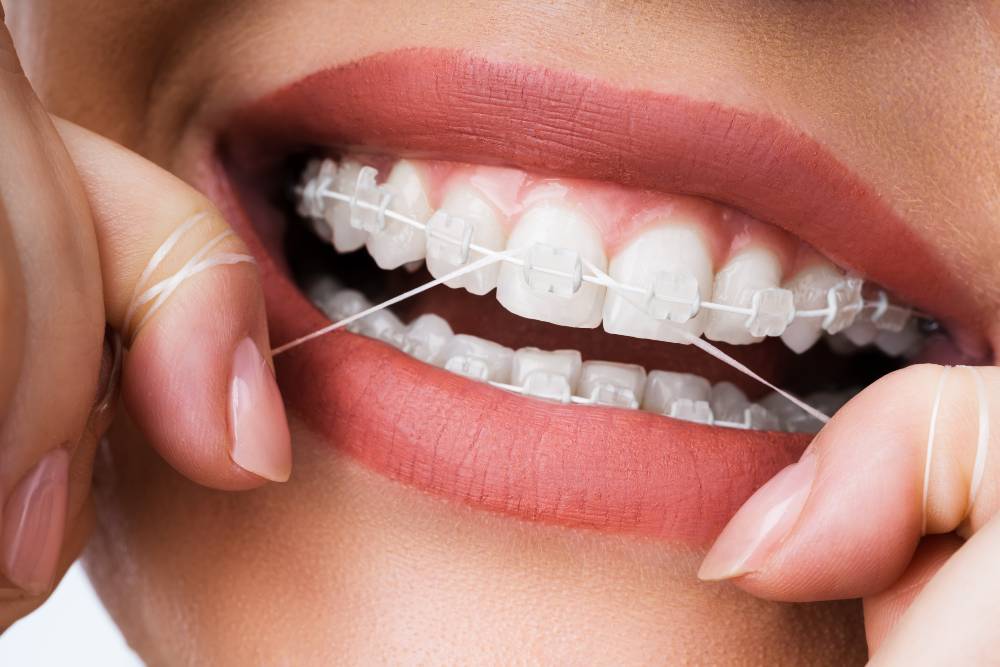3 Easy Facts About Legacy Orthodontics Shown
3 Easy Facts About Legacy Orthodontics Shown
Blog Article
How Legacy Orthodontics can Save You Time, Stress, and Money.
Table of ContentsSome Known Questions About Legacy Orthodontics.Some Of Legacy OrthodonticsThe Best Strategy To Use For Legacy OrthodonticsLegacy Orthodontics for DummiesLegacy Orthodontics Can Be Fun For Anyone
In enhancement, we use adjustable treatment timetables, versatile payment choices and an enjoyable, delightful experience.An orthodontist is a dental expert trained to identify, prevent, and deal with teeth and jaw abnormalities. Orthodontists work with individuals of all ages, from children to adults.
Malocclusion, or misaligned teeth, can lead to dental issues, including tooth degeneration, gum tissue disease, and challenging or uncomfortable eating. Not every person is born with straight teeth. If you have a poor bite or huge spaces between your teeth, you might wish to get in touch with a dental expert specializing in orthodontic care.
What Does Legacy Orthodontics Mean?
( Picture Credit: DigitalVision/Getty Images) Orthodontists use repaired and removable oral devices, like dental braces, retainers, and bands, to transform the setting of teeth in your mouth. Orthodontic therapy is for oral abnormalities, including: Misaligned teethBite problems, like an overbite or an underbiteCrowded teeth or teeth that are also much apartJaw misalignmentThe objective of orthodontic treatment is to enhance your bite.
While you may assume of orthodontists as primarily for children or teenagers who need braces, they can correct dental issues at any kind of age. Orthodontists participate in university, dental school, and orthodontic institution.
All orthodontists are dental experts, yet not all dentists are orthodontists. Orthodontic residency programs use extensive, concentrated guideline for dental professionals. They concentrate on two areas: How to correctly and securely relocate teeth Exactly how to correctly assist development in the teeth, jaw, and faceOnce an orthodontist has completed training, they have the option to become board licensed.
The Definitive Guide to Legacy Orthodontics
Imbalance, or malocclusion, is one of the most common factor people see an orthodontist. It is hereditary and is the result of dimension distinctions between the upper and reduced jaw or between the jaw and teeth. Malocclusion brings about tooth overcrowding, an askew jaw, or irregular bite patterns. Malocclusion is normally treated with: Your orthodontist affixes metal, ceramic, or plastic square bonds to your teeth.
If you have only minor malocclusion, you might have the ability to use clear dental braces, called aligners, as opposed to typical braces (https://www.storeboard.com/legacyorthodontics1). Some individuals need a headgear to aid move teeth into line with stress from outside the mouth. After dental braces or aligners, you'll need to use a retainer. A retainer is a custom gadget that maintains your teeth in position.
They can create extra room in the mouth without having to draw teeth. Orthodontists use cables, medical screws, or plates to this contact form sustain your jaw bone.
You may require to see an orthodontist if you have: Crowding or not enough room for all of your teethOverbite, when your upper teeth come over your bottom teethUnderbite, when your base teeth are also much forwardSpacing or issues with gapsCrossbite, which is when your upper teeth fit behind your bottom teeth when your mouth is closedOpen bite or a vertical void between your front base and upper teethMisplaced midline, when the center of your bottom and top teeth don't line up Dealing with a dental malocclusion can: Make biting, chewing, and talking easierImprove the balance of our face and your overall appearanceEase pain from temporomandibular joint conditionsDifferent your teeth and make them easier to clean, helping prevent dental cavity or cavities It's typically a dentist who initially notifications misaligned teeth throughout a routine exam.
The Single Strategy To Use For Legacy Orthodontics

During your first orthodontic assessment, you'll likely have: An oral examPhotos taken of your face and smileDental X-raysPanoramic (360 degree) X-rays of your face and headImpressions to create mold and mildews of your teethThese tests will assist your orthodontist understand how to wage your therapy. orthodontics. An orthodontist is a dentist that's had training to treat your teeth and jaw
Orthodontists may perform surgical treatment, exams,X-rays,and more to help you obtain an extra comfortable, healthier smile. An orthodontist is concentrated on your bite, so something like a cracked tooth would be managed by a dentist. Orthodontists are dental professionals but not all dental practitioners are orthodontists. Orthodontists are focused on your bite, or the means your teeth meshed, and the straightness of your teeth.
Ever wondered just how celebrities always appear to have completely lined up teeth? Orthodontists are dental specialists that concentrate on remedying irregularities in the teeth and jaws.
Fascination About Legacy Orthodontics

, orthodontists have a varied toolkit at their disposal. These reliable dental braces use a system of braces bound to the teeth and linked by cords.
Clear aligners, like Invisalign, are a preferred alternative for patients seeking a much more very discreet therapy alternative. These removable trays are custom-made to considerably move the teeth's position. Headwear might be used in conjunction with braces or aligners to use additional targeted forces, especially for dealing with jaw discrepancies. In instances of narrow jaws, palatal expanders can be made use of to create space for appropriate tooth positioning.
Report this page